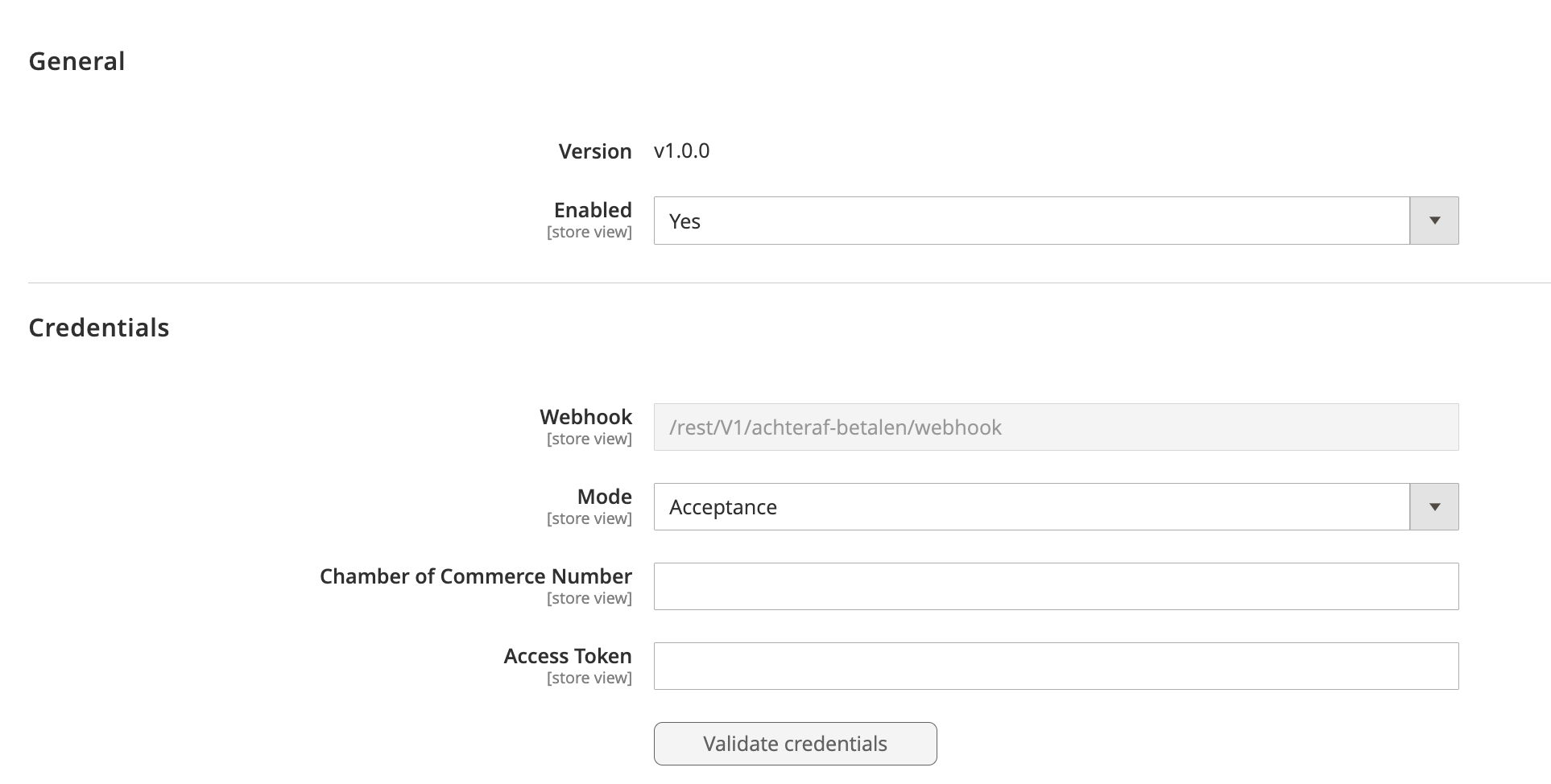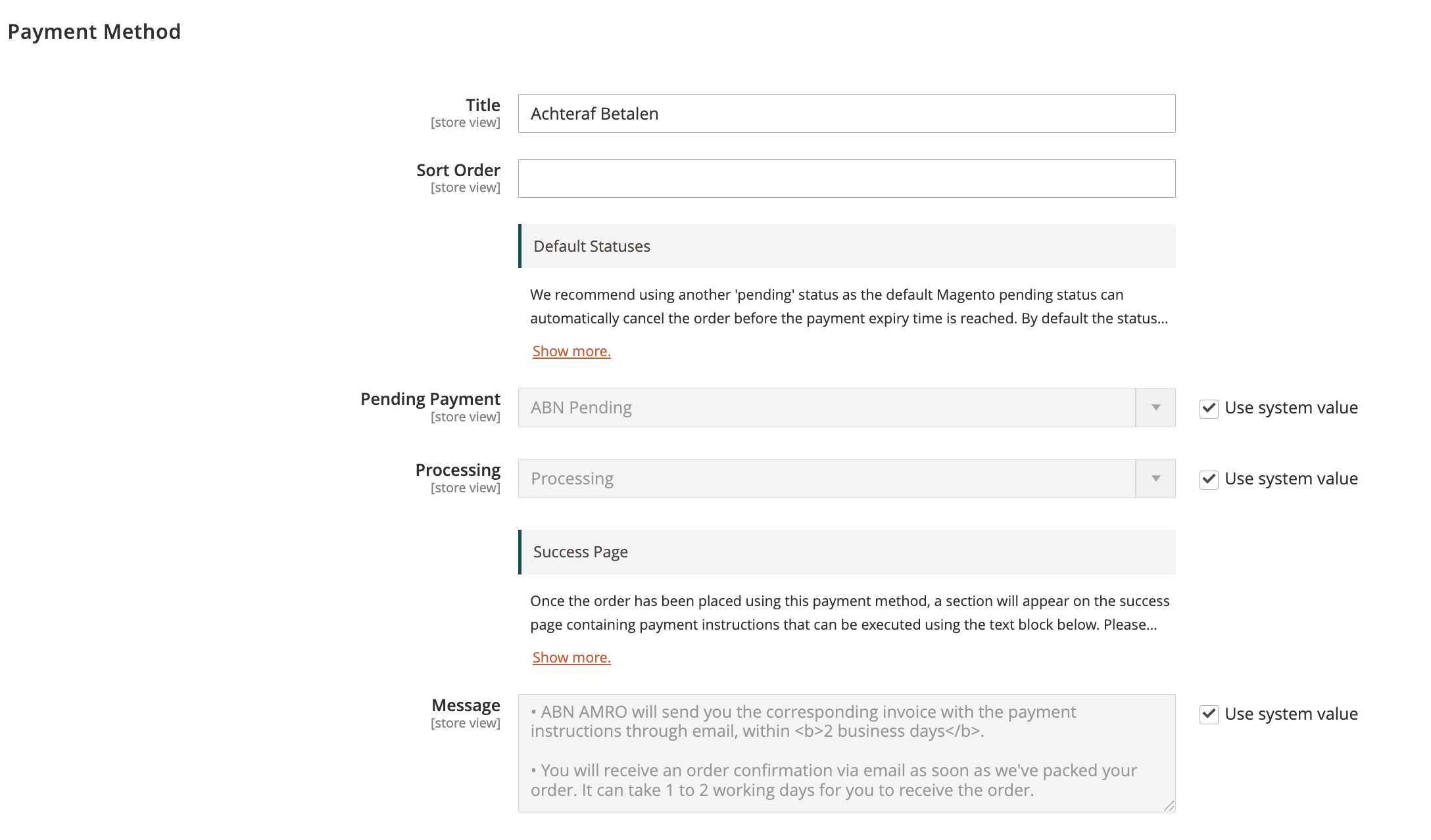Configure the ABN Achteraf betalen plugin


Once the plugin is installed in the right way, you can find the configuration under sales > Achteraf Betalen.
General
Version
Tells you the version that you are using
Enabled
Enable or disable the plugin using the Yes/No dropdown
Credentials
Webhook
This is the callback URL that is used by ABN Achterafbetalen, this is only used by the Achteraf betalen team
Mode
The ‘LIVE’ mode is necessary for the use of Achteraf betalen
Chamber of Commerce Number
Fill in your COC number
Access Token
Fill in the credentials provided by the Achteraf betalen team


Title
Fill in the payment method title, default is: Achteraf Betalen
Sort Order
Set the sort order of the payment method optionally
Default Statuses
Pending Payment State: Set a default status for the pending state. We recommend using another 'pending' status as the default Magento pending status can automatically cancel the order before the payment expiry time is reached. By default the status "Pending Payment" is not visible for customers, therefore we advise you to create a new status for this, which should also be visible to the customer, informing them they still have to complete their payment.
Processing State: Set a custom processing state, recommended is just Processing.
Success Page
Once the order has been placed using this payment method, a section will appear on the success page containing payment instructions that can be executed using the text block below. Please note that only HTML code formatting using <b>, <br>, <strong>, <i>, <u>, and <a> tags is permitted. The default message is:
• ABN AMRO will send you the corresponding invoice with the payment instructions through email, within <b>2 business days</b>.
• You will receive an order confirmation via email as soon as we've packed your order. It can take 1 to 2 working days for you to receive the order.
• You will find your invoice in the shipping confirmation. You will receive this when your package is shipped.


Enable this function to write debug records and log events, API calls, and other debugging-related information into a debug.log file. Errors are always logged and written into the error.log file. You can disable this in case you are in production mode.
